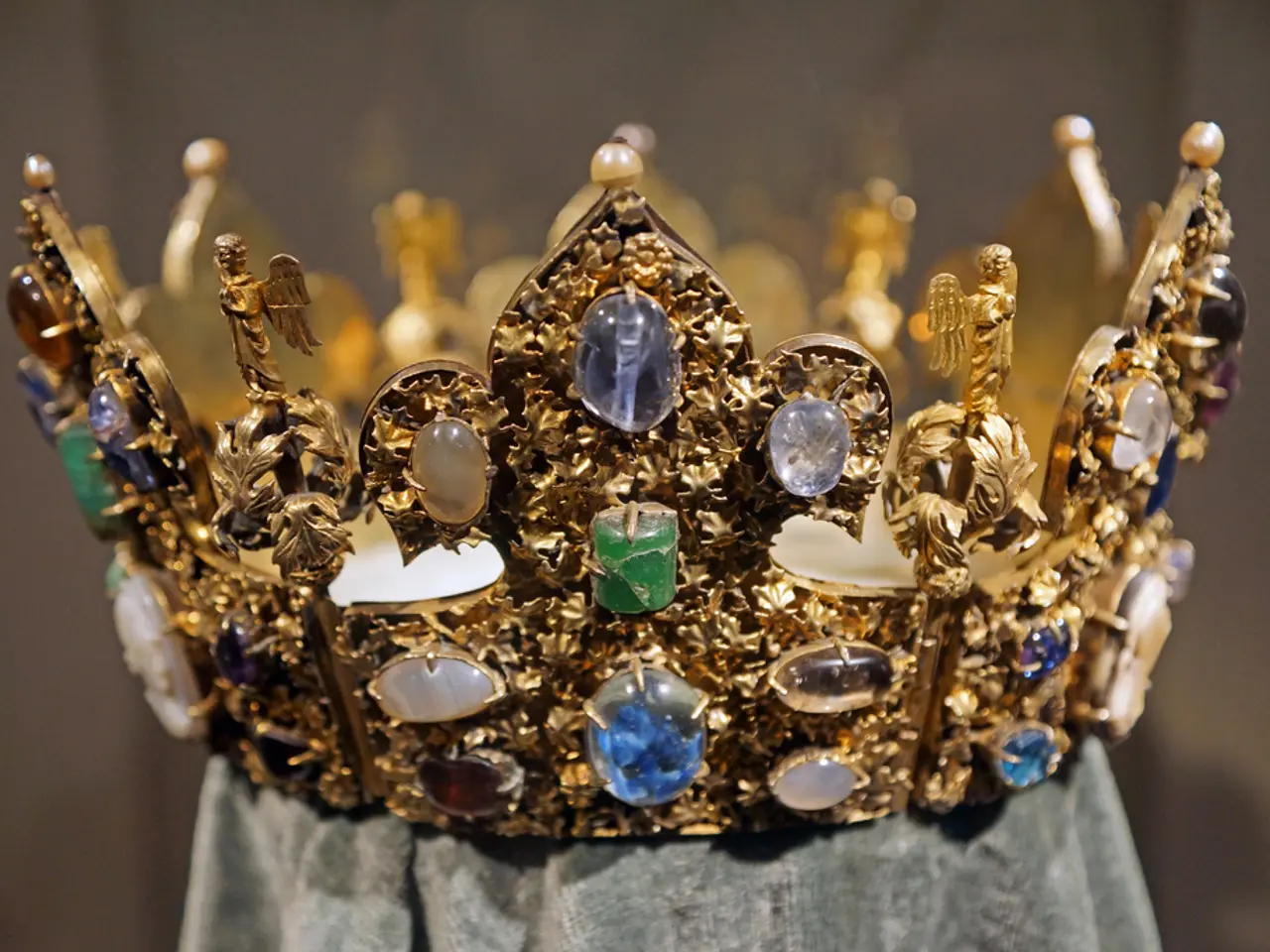Birthstone information: Amethyst for individuals born in February
The historical significance of amethyst in royal families and the Crown Jewels is multifaceted, encompassing symbolism, tradition, and notable royal collections. This captivating purple gemstone, a February birthstone, has been cherished for its rich symbolism and timeless beauty.
Amethyst's association with royalty, sobriety, and spiritual clarity can be traced back to its Greek name "amethystos," meaning "not drunk." Historically, it was believed to protect the wearer from intoxication and to provide calmness and clarity of mind. In Christian symbolism, its purple color references the wounds and suffering of Jesus, further enhancing its spiritual and ceremonial importance in royal contexts.
One of the most intriguing aspects of amethyst's royal history is its presence in key artifacts and jewels that have been passed down through generations. Among the British Royal Family's treasured heirlooms is a set of amethyst jewelry originally owned by Queen Victoria's mother, the Duchess of Kent. This set, which includes a necklace, brooches, hair combs, and earrings, is the oldest in the royal collection and has been worn by Queen Elizabeth II at formal events, such as the 1985 banquet in Portugal.
Amethysts are also integral to the St Edward’s Crown, the coronation crown of English monarchs. The current crown, used in King Charles III’s 2022 coronation, contains 444 gemstones including amethysts, symbolizing the gem’s role in royal regalia and signifying authority and continuity. The Honours of Scotland, Scotland’s Crown Jewels, also feature amethyst prominently. The crown includes a notable large amethyst atop the gold cross on the crown’s monde, symbolizing divine authority and part of a tradition dating back to the reign of Robert the Bruce and James V.
Beyond British royalty, amethyst was cherished by historical figures such as Catherine the Great of Russia, who owned a significant collection of amethyst jewelry, signaling the gem’s longstanding association with imperial power and elegance.
When caring for amethyst, it's essential to avoid using an ultrasonic cleaner to prevent expanding small inclusions or internal fractures. Instead, use warm soapy water and a very soft brush to clear away dirt. It's also important to note that the color of some amethyst stones can fade when exposed to sunlight.
In conclusion, amethyst's significance in royal families and the Crown Jewels lies both in its historical symbolic meanings—such as sovereignty, spiritual protection, and clarity—and its physical presence in key royal artifacts and jewels that have been passed down through generations. This captivating gemstone continues to captivate us with its rich history, timeless beauty, and enduring allure.
- The fashion-and-beauty industry often incorporates amethyst in its designs, considering its royal heritage and timeless appeal.
- For individuals passionate about gemmology, courses and workshops in education-and-self-development can offer in-depth knowledge about amethyst and its significance.
- Publications in the field of lifestyle, home-and-garden, offer practical insights on how to care for and display amethyst jewels at home.
- Amethyst jewelry is a staple in contemporary gemstone collections, mirroring its prominence in historical royal collections.
- The symbolic power and allure of amethyst continue to be explored in modern publications and workshops, reinforcing its role as a gemstone of learning and personal growth.




